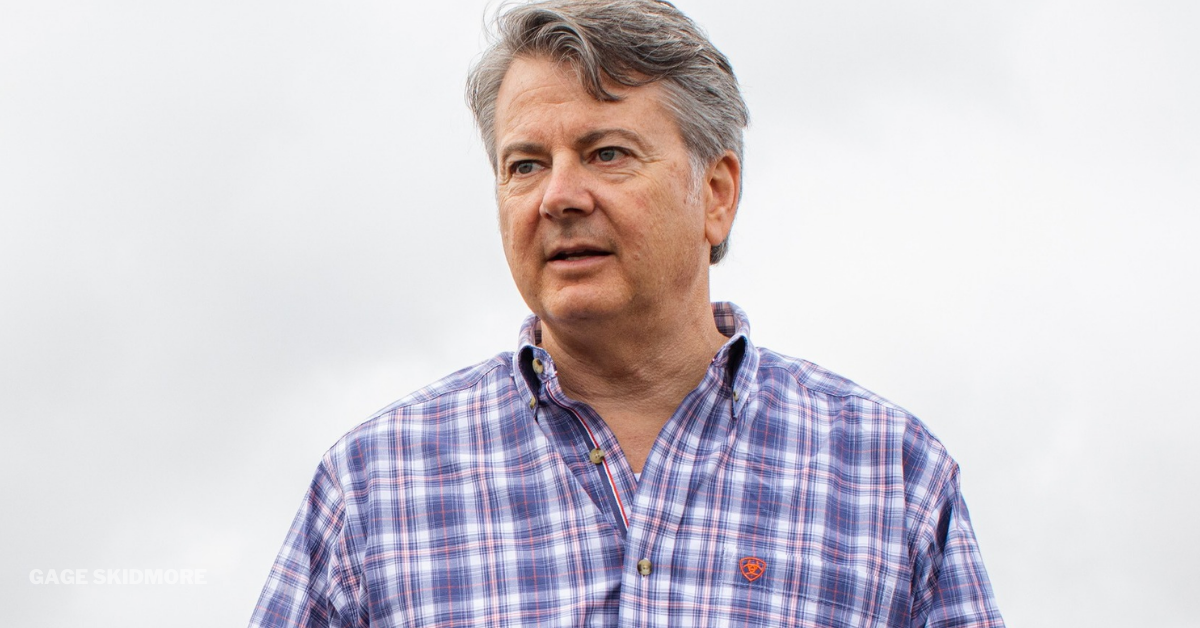I saw something on Sept. 8 that has to be a first: Local development theorists, local development regulators and a major local developer in the same room, acting like the sausage-making process known as urban growth is just one big, never-ending lovefest.
I wanted to shout, “Don’t you know we’re in Fresno?”
On the other hand, maybe what I saw is one of those “black swan” events that, in retrospect, is seen as a turning point in history. Maybe we’re on the cusp of major change in how the public and private sectors do development in metropolitan Fresno.
To cut to the chase, Fresno State has a new Bachelor of Science degree program – city and regional planning.
The idea is to train the best young Valley minds in the complexities of regulated development, then convince the newly-minted graduates to stay home and help transform the region’s urban landscape.
Officials from Fresno State and City Hall joined McCaffrey Homes President Brent McCaffrey at the official announcement ceremony on Sept. 8 at the developer’s corporate headquarters in North Fresno.
Students for decades could attend Fresno State and get pretty much all the instruction they needed to jumpstart a career in city planning. One of my roommates during my Fresno State days in the 1970s took this route; he got a job after graduating as a planner for the city of Visalia and did just tine. And the late Hal Tokmakian, a Fresno State planning professor, taught many a budding city planner (not to mention more than a few of The Bee’s City Hall reporters via late-afternoon phone calls) all about the nuances of land-use policy.
But I gather from Fresno State’s news release that city and regional planning had been something of a redheaded stepchild within the university’ Geography Department. Not anymore. City/Regional Planning as of this semester now stands proud and equal among the academic disciplines at Fresno State.
“The Central Valley is one of the fastest growing places in California, and actually in the world,” said Michelle DenBeste, interim dean of Fresno State’s College of Social Sciences. “Yet, we have no city and regional (planning) program. This has been an issue. We don’t want to send our students off to somewhere else. They don’t come back. We would like to grow our own and encourage them to stay here.”
Fresno State has already raised about $300,000 in scholarship funds. McCaffrey Homes, Bonadelle Homes, Granville Homes, The Penstar Group and Silkwood Ventures have contributed.
DenBeste explained why Fresno State was announcing a new degree program at a developer’s office. It turns out that the university and McCaffrey Homes are partners.
McCaffrey Homes for years has wanted to build a master-planned community on 1,600 acres in Madera County, just to the north of the Fresno-Clovis metropolitan region. A lot of planning remains to be done before the project – Tesoro Viejo – becomes a reality.
Fresno State’s new city and regional planning degree program needs a “case study” to enable its students to get real-world experience in creating a growth blueprint that passes muster with bosses, buyers and regulators.
McCaffrey Homes and Fresno State saw an opportunity for a mutually advantageous deal. The result: Fresno State planning students will work on the Tesoro Viejo project.
The Fresno State partnership with McCaffrey Homes/Tesoro Viejo, DenBeste said, “is a really fine opportunity for students to learn all different aspects of planning because this unique kind of development has many things in it that are not necessarily just home building – schools, different kinds of facilities, everything from wastewater to environmental issues. These are the sorts of things our students will get different types of experience with. We really appreciate the opportunity to partner with (McCaffrey Homes).”
DenBeste introduced Michelle Calvarese, chair of Fresno State’s Department of Geography and City and Regional Planning.
Calvarese said her department is excited about the birth of the new degree program.
“Our goal is not to just create a planning program, but to create one of the most robust planning programs in the state of California,” Calvarese said. “We plan to do that by creating relationships with the triad of people involved in planning: The private sector, government as well as the community. Because everyone knows – nothing gets done, nothing moves from a piece of paper, unless all three parts of the triad cooperate and work together.
“We’re going to do that by creating a set of classes that allows students to gain these opportunities. They’re not just going to learn about urban planning theory. They’re also going learn about transportation planning, environmental planning, environmental law, natural hazards planning – that’s timely – as well as our case studies class, which will be the first of its kind ever offered in our department.
“We’re also going to have internships, opportunities for students to work with both the public and private sectors, and, as mentioned, we’ll also have scholarships available. So, when students come out, they’re going to be well-rounded planning (graduates) that know every aspect of planning so they’re not knocked over the head when they get into the real world.”
Next to the microphone was Dan Zack, an assistant director in Fresno’s Development and Resource Management Department and perhaps the key planner in City Hall’s effort to revitalize older parts of town.
Zack, a Fresno State graduate, said he is confident that Fresno State’s new degree program will be a blessing to the community.
“We’re a growing city with a lot of challenges,” Zack said. “We’re growing outward, and that presents a unique set of challenges and opportunities. We’re growing inward now in a way that we never have before with infill development that is revitalizing Downtown, which has a whole different set of unique challenges and opportunities. Having people coming out of a program like this that know how to address these (issues) and find creative solutions to the challenges that we have is going to be really wonderful for the community.”
McCaffrey Homes President Brent McCaffrey was the final speaker. He noted that McCaffrey Homes has donated $25,000 in scholarship money to the new degree program.
“Perhaps the most exciting part of this is our Tesoro Viejo, our master-planned community in southeast Madera County,” McCaffrey said. “It will serve as a case study for students in the program, where they will gain real-world, hands-on experience.
“Tesoro Viejo provides a unique opportunity with its new urbanistic planning in areas that concentrate on conservation, walkability and natural resources. The 1,600-acre site features more than 15 miles of walking and biking trails. It also has over 400 acres of open space, a Madera County fire station and a Madera County Sheriff substation.
“Students will learn the social and economic impact of planning a community through the lens of Tesoro Viejo’s town center that will embrace three million square feet of commercial (space), which will help to create jobs. Tesoro Viejo also offers a diverse housing product for (people from) all walks of life and all needs. Because of its diversity, the Tesoro Viejo case study will provide a broad range of learning opportunities. Students will learn a balance of social, economic and environmental components in a master-planned community during the planning, design and implementation (stages).
“Once again we, too, are thrilled to partner with Fresno State/Social Sciences to announce this exciting new degree program.”
I asked Calvarese after the formal speeches whether Fresno State’s planning students would get a lecture or two about the history of growth in Fresno metro region. She assured me they would.
No need to cram that history into this piece. It’s sufficient here to note that 1.) the founder of the empire that includes McCaffrey Homes was John Bonadelle Sr.; 2.) it’s not a stretch to say Bonadelle was more responsible than any other one person for the way Fresno grew in the 20th century; 3.) Zack has gone on the record many times in advocating for the vision outlined in Fresno’s 2035 general plan; 4.) the 2035 general plan is one of Ashley Swearengin’s most valued legacies from her two terms as mayor; 5.) the Swearengin administration cast a jaundiced eye, to say the least, on the prospect of massive urban growth on the Madera County side of the San Joaquin River (an area generally called Rio Mesa), saying such expansion would threaten the 2035 general plan; 6.) Tesoro Viejo is just one part of the Rio Mesa vision; 7.) Rio Mesa, if completely built out, could have a population in the range of the current population of Clovis; 8.) Rio Mesa has faced a lot of challenges from activists since the Rio Mesa Area plan was unveiled in March 1995; 9.) Rio Mesa, should it move forward, most likely will face more challenges from activists; 10.) Rio Mesa with 100,000-plus people would be a regional game-changer.
This is why, as I said in the beginning, I thought I’d never see the day when planning idealists, Fresno City Hall officials and a developer of historic power and stature got together to tell the public that they had found the secret to cooperative planning.
But life is all about unexpected change.
Zack said it best when he explained the charm of urban planning as a career.
“You get think: What is possible?”










In a way, it’s still a stepchild when you consider the long dead graduate program was its own department for quite some time. Until this week, there had never been an undergrad degree in the discipline at Fresno State.
City and Regional Planning (originally known as Urban and Regional Planning or URP) started life in the 1970s as part of Geography. As the program grew, it became its own fiefdom with five faculty. As I entered the program in the mid-1980s, one of the faculty had died during a graduate seminar class and two others were in the faculty early retirement program.
The university was about to enter a budget down cycle, so the decision was made to merge CRP with Political Science. The logic was “planning is kinda like public administration, let’s put it in poli sci.” It was a marriage made in hell. Political Science really wanted no part of CRP and made that very clear. The soon-to-be retiring faculty were not slated to be replaced, so moves to gradually close the grad program down began in 1988. After the last people completed degree requirements, it ended.
What was left, a few classes, were dumped back into Geography. That’s where things stood until the certificate program was created.
A P.S. The stumbling block to Rio Mesa development is the lack of reliable ground water supplies.